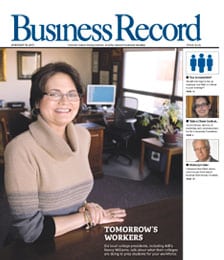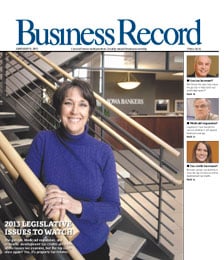The spiraling costs of health insurance

Some businesses absorb expenses and others cut benefits
For the past four years, Field Paper Co. Vice President and General Manager Jerry Biga has helped the commercial paper distributor scramble to accommodate 30 percent annual increases to its health insurance expenses.
Last year, the costs for insuring Field Paper’s employees jumped another 40 percent. Unable to absorb the increases internally, the company chose to boost costs for some elements of its plan, including the amount that workers pay out of their own pockets when visiting doctors.
Field Paper, whose customers include Acme Printing Co., Edwards Graphic Arts Inc., and Colorfx Inc., also cut back on the amount of coverage that it offers to the 15 workers who get their health insurance from the company. Roughly half of the company’s 30 employees are either insured through a spouse or handle their insurance independent of Field Paper’s plan.
“We’ve gone to a lesser plan and tried to keep it so that the maximum out-of-pocket expenses for our workers doesn’t increase too much,” Biga said. “For most part, we’ve had to sacrifice.”
The experiences at Field Paper are echoed by owners of small- and medium-sized businesses throughout Greater Des Moines as double-digit increases to health-insurance costs demand difficult choices. In calls to a dozen local businesses, managers and owners said they are absorbing the costs, cutting employee benefits, or doing both.
At Ferguson Commercial Real Estate Services, owner Darin Ferguson said he has been absorbing increasing health-related insurance costs in recent months because he wants employees to feel that they are well taken care of. He has not trimmed any benefits. The increased costs have been “in the thousands of dollars,” he said.
“I feel so strongly about my employees and I don’t want them to leave,” he said. “I am sucking it up and paying it. It’s coming out of profits.”
The dynamics facing the health-care industry are well known and complex. Innovation and increasing usage, particularly for prescription drugs, continues to push costs higher.
Fluid Technology Corp., which sells equipment that controls and measures fluids for the food processing and manufacturing industries, said the cost to insure its 13 employees jumped to $100,000 in January from $75,000 last year.
The increase came despite the company’s switch to a less comprehensive plan, including one that now carries a deductible, said owner Renee Allen.
“We had been warned so it wasn’t unexpected,” she said. “Still, you hate to see benefits decline, even a little.”
Managers at Faust Body Shop found last October when they renewed their policies that costs rose 12 percent from the prior year. The company insures six workers, according to assistant manager and co-owner Pam Faust.
The company, which asked for insurance bids from three companies in September, now pays $1,371.67 per month to insure each employee, up from the $1,223.16 it previously paid. Faust said she expects the increases to continue.
“This year will be interesting,” she said. “I am sure it will go up again.”
Some business owners and managers said they have attempted in the past to change health-care insurers frequently, attempting to hold down cost increases by playing insurers against one another. It works for the first year, they said, because insurers frequently give low bids to attract business. Costs rise dramatically in subsequent years.
However, hopping from plan to plan has its own costs.
Chief among them is the time it takes to complete the paperwork necessary to attract bids from insurers. Second, some insurers offer deeper discounts to long-term customers.
Field Paper tried that strategy for years, but tired of it.
“We didn’t want to keep changing companies because it’s a long process,” said Biga.
Competition among insurers intensifies
The market to provide health-care insurance has intensified in Central Iowa in recent months as new entrants are waging a siege on Wellmark Blue Cross and Blue Shield of Iowa, the state’s dominant health insurer.
Coventry Health Care of Iowa Inc. last fall introduced a new product called Iowa Flex that executives there hope will give employees greater choice while dampening cost increases. That plan boosts a worker’s deductible, giving employers a break while at the same time putting more cash in a worker’s medical spending accounts.
UnitedHealthcare Group, one of the bigger players nationally, got a break last year when Central Iowa’s two biggest hospital groups chose it to replace SecureCare, the health-care plan that was owned by more than 400 Central Iowa doctors and Mercy Medical Center.
Wellmark continues to increase its efficiency and cut its own administration expenses, wringing costs from its system. The company also uses its size to win concessions from health-care providers.







